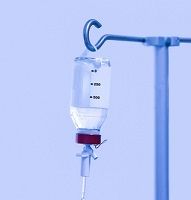Panel Sets New Criteria for Peripherally Inserted Central Catheters
The use of peripherally inserted central catheters (PICCs) has been rising steadily. But they can cause complications. In an article in Annals of Internal Medicine a multispecialty panel reports on the Michigan Appropriateness Guide for Intravenous Catheters (MAGIC). The panel came up with new PICC criteria.

The use of peripherally inserted central catheters (PICCs) has been rising steadily. This approach to getting medications to patients has its advantages.
Compared to central venous catheters, PICCS are safer to insert, cost-effective and convenient for nursing teams and self-care. But PICCs can also cause infections and thrombosis.
In an article in Annals of Internal Medicine a multispecialty panel reports on the Michigan Appropriateness Guide for Intravenous Catheters (MAGIC), The panel offered new guidelines on how and when to use PICCs.
The international group reviewed 665 scenarios when physicians would likely consider PICCs. It then decided whether a PICC was better than other venous access devices.
In 665 scenarios, 253 (38%) were rated as appropriate, 288 (43%) inappropriate. The rest were rated neutral or uncertain.
Among the inappropriate uses, PICC was rated inappropriate when the proposed duration of use was five or fewer days.
Midline and ultrasonography-guided peripheral intravenous catheters were preferred to PICCs for use between six and 14 days.
In critically ill patients, nontunneled central venous catheters were preferred over PICCs when 14 or fewer days of use were likely. In patients with cancer, PICCs were rated as appropriate for irritant or vesicant infusion, irrespective of duration.
The panel also noted that it would be helpful for physicians to have website or smartphone apps to guide them through the decision process on whether to use a PICC.
It said that the Hospital Medicine Safety collaborative quality improvement project, funded by the Blue Cross Blue Shield/Blue Care Network has already started working on developing these apps.
The Veterans Affairs Health System has agreed to test the new criteria.